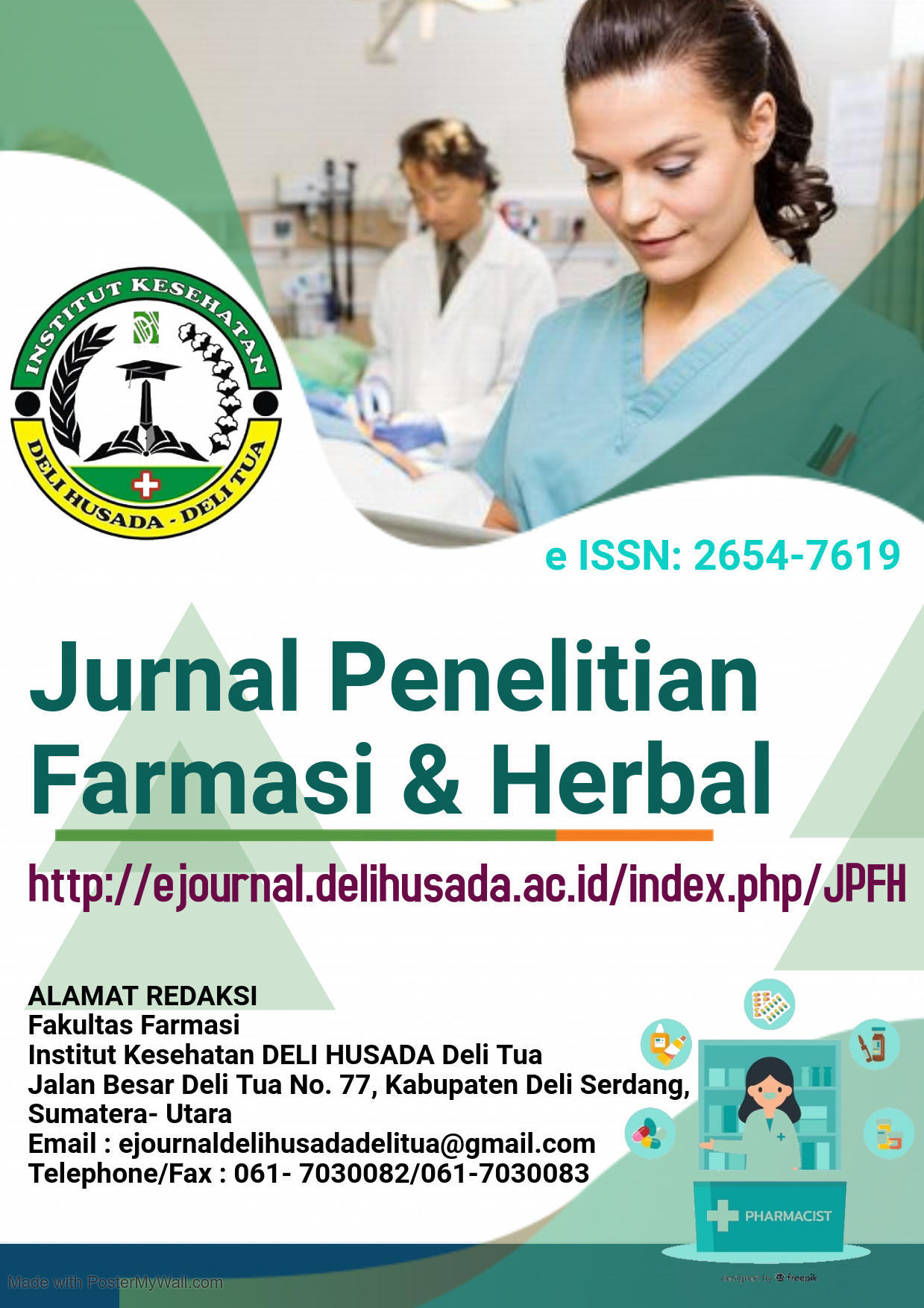ANTIBACTERIAL ACTIVITY TEST OF LIME JUICE EXTRACT AGAINST ESCHERICHIA COLI
Abstract
Lime (Citrus aurantifolia Swingle) is known to have seceral phytochemical contents (flavonoids and saponins) that can be memiliki berbagai aktivitas farmakologis yang bermanfaat. Salah satu aktivitas farmaokologis yang diberikan oleh flavonoid adalah sebagai antibacterial activity. The aims of this research was to determine the antibacterial activity of lime juice against Escherichia coli bacteria. This research used an experimental laboratory research method using antibacterial effectiveness trials against the growth of Escherichia coli bacteria. The research design for antibacterial effectiveness used the lime fruit extract method with 4 treatment groups, positive control and negative control. Antibacterial effectiveness was observed the inhibition zone diameter by disc diffusion method. Results of the Escherichia coli antibacterial effectiveness test obtained at a concentration of 100% had antibacterial activity with an average diameter of the inhibition zone 19.9 mm. The lowest concentration that still provides antibacterial resistance against Escherichia coli is at a concentration of 12.5% with an average diameter of the inhibition zone of 17.9 mm. The results obtained indicated that the antibacterial effectiveness test on lime fruit extract is very strong. At a concentration of 100% it has the best antibacterial activity, the inhibition zone diameter similar with the inhibition zone of 500 mg tetracycline.
Downloads
References
Agoes, H.A. 2010. Kimia Farmasi Analisis. Jakarta : Penerbit Salemba Medika. Halaman 37-38.
Borghi, A.A., and Palma, M.S.A. 2014. Tetracycline : Production, Waste Treatment and Environmental Impact Assessment. Brazilian Journal of Pharmaceutical Sciences, 50(1) : 25-40.
Davis, W.W., and T.R. Stout. 1971. Disc Plate Method of Microbiological Antibiotic Assay. I. Factors Influencing Variability and Error. Applied Microbiology, 22 : 659-665.
Elya, B., Kusuma, IM., Jufri, M., and Handayani, R. 2016. Antibacterial Tests Against Acne in vitro, the Physical Stability and Patch Test using Cream Containing Ethyl p-methoxycinnamate Extracted from Kaempferia galanga L., Rhizoma. Research Journal of Medicinal Plants, 10 (8) : 426-434.
Krishnan M., Dey Dk., Sharma, C., and Kang, S.C. 2019. Antibacterial Activity of Weissella confusa by Disc Diffusion Method. Bangladesh Journal of Pharmacology, 14 : 117-122.
Lin, L-Y., Chuang, C-H., Chen, H-S., and Yang, K-M. 2019. Lime (Citrus aurantifolia (Christm.) Swingle) Essential Oils: Volatile Compounds, Antioxidant Capacity, and Hypolipidemic Effect. Foods, 8 : 398.







